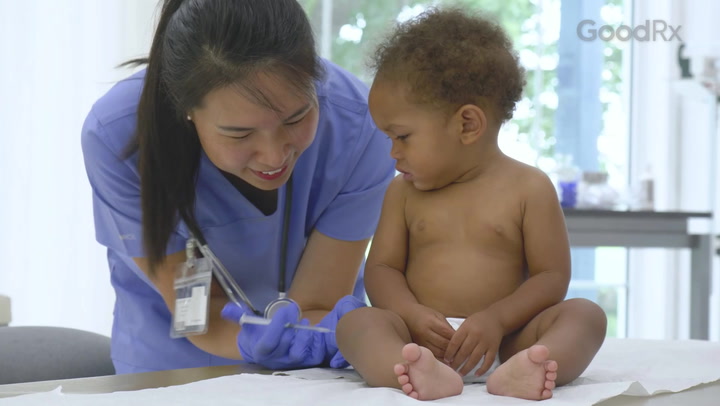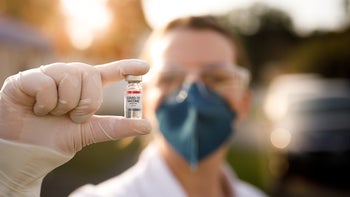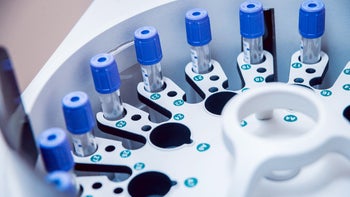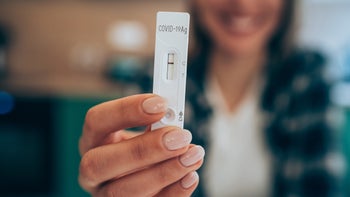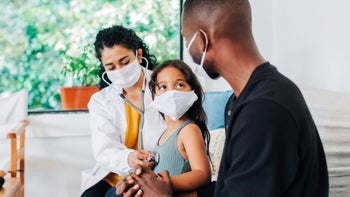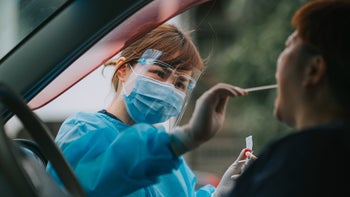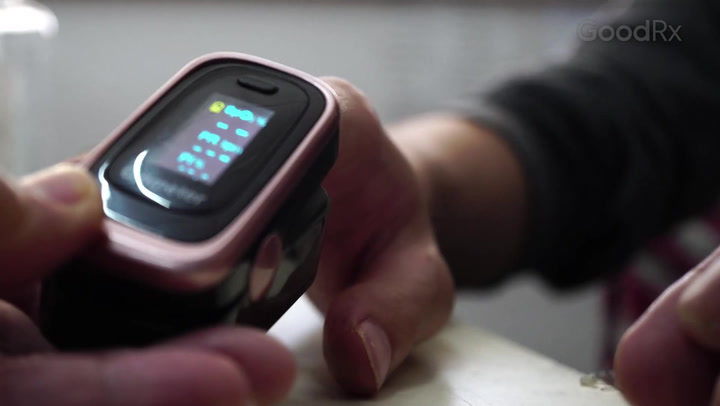
How Does the Immune System Fight COVID?
Key takeaways:
The immune system is built to fight viruses like COVID in many ways. There are two ways this happens: the innate immune process and the acquired process.
Sometimes the immune process can become overactive after COVID infection and lead to a cytokine storm. This can be dangerous and lead to severe complications of COVID.
There are many ways to boost your immune system to fight COVID. The COVID vaccine is one of the best ways to do this.
When working well, the immune system has many ways to tackle viruses like COVID-19. This natural defense is important in preventing severe illness from COVID. Your immune response also plays an important role in your body’s ability to get the protective benefits of the COVID vaccine.
Knowing what a normal immune response looks like can help you understand how you might respond to a COVID infection.
How does your immune system work?
Let’s start with the basics. The immune response has two systems that work together in different ways to protect you. These are the innate and acquired immune systems.
Search and compare options
Innate immune system
Your innate immune system is the first line of defense against viruses like COVID, taking minutes to hours to kick in. It provides a general defense against invaders. This system includes:
Physical barriers, like skin and mucus
Protective layers, like the lining in the throat or gut
Chemicals in your blood, like proteins and receptors
Different immune cells to fight infections, like neutrophils
The main purpose of this response is to stop the spread of the infection throughout the body.
Acquired immune system
While this is going on, the acquired immune system develops antibodies and white blood cells. This is to both attack and remember viruses like COVID, making it easier to fight it again. Compared to the innate immune response, this response is more specific.
The acquired immune response is also slower, usually taking days to weeks. This is why it can take days to a few weeks for your blood to show antibodies to COVID after you’ve been infected.
As part of this response, your body makes antibodies that turn on your immune system to fight against invaders. And this is generally how many vaccines work.
How does the immune system respond to the COVID virus?
Under normal circumstances, the innate immune response first kicks in to attack and clear out the virus. Then the acquired immune responds by trying to remove any remaining virus and creating a memory for future infections.
For people with asymptomatic or mild cases of COVID, everything tends to work together as it should. This is what prevents it from progressing to severe disease that requires hospitalization.
But in severe COVID cases, research shows that different parts of the immune response can be out of sync. This can lead to some of the complications of a severe COVID infection.
What is a cytokine storm?
In people with severe disease, certain parts of the immune response ramp up too much. And those involved in clearing the virus don’t work as well. This can progress into what is often described as a “cytokine storm.”
During a cytokine storm, the immune system becomes hyperactive. Cytokines are chemicals the body produces to trigger inflammation. This is normally to help clear an infection.
But in a cytokine storm, they cause inflammation to go haywire and spread around the body. The end result can be critical damage to your organs, like:
Pulmonary embolism (blood clots in the lungs)
Stroke
Kidney damage
Septic shock (multiple organ failure)
People with severe COVID infection who have a cytokine storm tend to have a worse prognosis and higher risk of death.
Who is at risk for developing a cytokine storm from COVID?
People most at risk are those who have underlying conditions that cause inflammation or a weakened immune system. This can lay the groundwork for normal processes in the body to not work as they should. These conditions can include, but are not limited to:
Cardiovascular disease
High blood pressure
Obesity
Diabetes
COPD (chronic obstructive pulmonary disease)
Older age can also put you at risk, since the immune system typically does not work as well as with age.
How does a COVID vaccine affect your immune response?
The COVID vaccine is a critical part of your immune response to the infection. Once you get the COVID vaccine, your acquired immune system is activated against the COVID virus.
This means that when you come in contact with the virus in the future, your body will have antibodies ready to fight and clear the infection. It can take multiple exposures for your body to create enough antibodies to fight COVID well. That’s why you need more than one vaccine to be fully protected.
This immune response doesn’t last forever though. The COVID virus continues to change itself, forming new variants. This allows it to go undetected by the immune system. Plus, the antibodies you create in response to the vaccine also decrease over time. These are the reasons why people need booster shots to rev up the immune system against COVID.
Once you’ve had COVID, are you immune to the virus?
It’s not clear if some people develop long-lasting immunity to COVID after an infection. But there is evidence that you do have at least some short-term protection against the virus after infection.
But some people continue to get reinfected. It’s not entirely clear why some people get infected again and others don’t. There are likely many factors at play, including:
Evolving, new strains of the virus
The severity of your infection
Your overall health status
Your vaccine status
Underlying conditions that affect your immune function
Ways to boost your immune system
While there are no sure-fire ways to prevent COVID, here are some tips to keep your immune system as strong as possible.
Get vaccinated
Vaccines are one of the best ways to boost your immunity against COVID. While it may not completely prevent you from getting a COVID infection, the vaccine can keep you from having a serious infection. It can also keep you from landing in the hospital or dying from COVID.
COVID vaccines can boost your immune system even if you’ve had a previous COVID infection. You should wait about 90 days after having COVID to get the vaccine and at least 120 days to get the booster.
Get enough sleep
Studies have shown that getting enough sleep is important for a healthy immune system. If you are not regularly getting enough sleep, this can also put stress on your body, causing inflammation.
So how much sleep do you need? The CDC recommends that adults get at least 7 hours or more of sleep each night.
Eat a healthy diet
Nutrition also supports the immune system, making sure that it has the energy and nutrients that it needs to fight off an infection. In fact, important parts of immune health are in the gut. This includes immune cells and microorganisms, like good bacteria, that keep things in balance.
A good place to start is eating a well-balanced diet with fresh foods and decreasing your intake of processed foods. Talk to your healthcare provider about the nutritional needs that work best for you.
Exercise
Regular physical activity can help improve your immune system’s defenses. Exercise has been shown to strengthen your immune cells and reduce inflammation.
Try to get daily exercise — ideally up to 60 minutes of moderate activity. This may boost your immune system and help you fight off infection.
Quit smoking
Smoking has a negative effect on the immune system. It makes you more susceptible to infections and increases your risk of severe COVID.
Some people use electronic cigarettes as an alternative to regular cigarettes. But they can potentially increase inflammation in the lungs. Consider quitting if you currently smoke or vape.
The bottom line
The immune system was designed to fight infections like COVID. But sometimes it needs some help. One of the best ways to boost immunity is the COVID vaccine. The vaccine can keep you from getting seriously ill. This is especially true if you’re at risk for severe infection or have a weak immune system. Talk to your provider about your risk for COVID infection and your need for immune-boosting strategies.
Why trust our experts?


References
Besedovsky, L., et al. (2012). Sleep and immune function. Pflugers Archiv: European Journal of Physiology.
Bhaskar, S., et al. (2020). Cytokine storm in COVID-19 – immunopathological mechanisms, clinical considerations, and therapeutic approaches: The REPROGRAM consortium position paper. Frontiers in Immunology.
Centers for Disease Control and Prevention. (n.d.). Smoking and overall health.
Centers for Disease Control and Prevention. (2022). Benefits of getting a COVID-19 vaccine.
Centers for Disease Control and Prevention. (2022). How much sleep do I need?
Centers for Disease Control and Prevention. (2022). People with certain medical conditions.
Centers for Disease Control and Prevention. (2022). Reinfections and COVID-19.
Childs, C. E., et al. (2019). Diet and immune function. Nutrients.
Huang, L., et al. (2020). Sepsis-associated severe interleukin-6 storm in critical coronavirus disease 2019. Cellular & Molecular Immunology.
Johnson, B. S., et al. (2020). A cytokine super cyclone in COVID-19 patients with risk factors: the therapeutic potential of BCG immunization. Cytokine & Growth Factor Reviews.
Long, Q., et al. (2020). Antibody responses to SARS-CoV-2 in patients with COVID-19. Nature Medicine.
MedlinePlus. (2022). Immune response.
Moderbacher, C. R., et al. (2020). Antigen-specific adaptive immunity to SARS-CoV-2 in acute COVID-19 and associations with age and disease severity. Cell.
Nieman, D. C., et al. (2019). The compelling link between physical activity and the body's defense system. Journal of Sport and Health Science.
Perlman, S. (2020). COVID-19 poses a riddle for the immune system. Nature.
Sacco, C., et al. (2022). Risk and protective factors for SARS-CoV-2 reinfections, surveillance data, Italy, August 2021 to March 2022. Eurosurveillance.
Scott, A., et al. (2018). Pro-inflammatory effects of e-cigarette vapour condensate on human alveolar macrophages. Thorax.
Ye, Q., et al. (2020). The pathogenesis and treatment of the ‘cytokine storm’ in COVID-19. The Journal of Infection.


